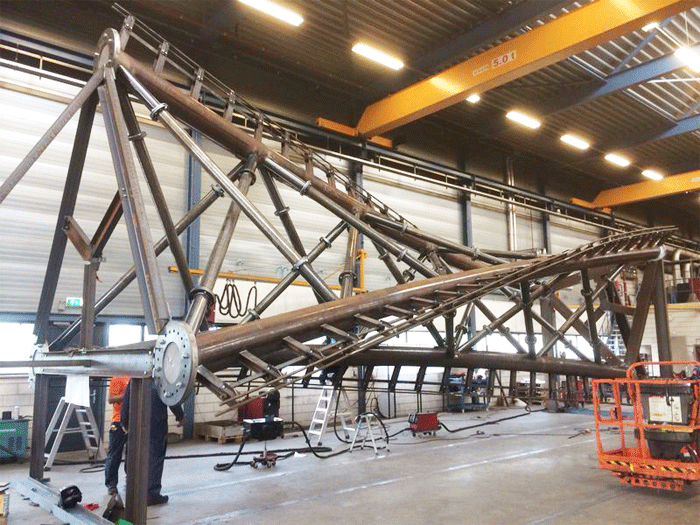The Oasys Project of the year competition aims to showcase some of the best schemes delivered using Oasys software. Below are the commercial and academic winners of the structural category who used Oasys GSA analysis software in the development of their projects. Full details of the competition can be found oasys-software.com/competition
Academic category Winner
This research project into a new roof design for the ‘Kuip’ stadium in Rotterdam was part of the Masters in structural design course at the Eindhoven University of Technology. The primary criteria was to design an elegant retractable roof that covers the extended stadium with 63.000 spectators.
The winning entry from Mr Van Kinoppenberg and Mr Cox featured a lightweight cable structure roof. Instead of a most stadium roofs, which feature a superstructure with large rigid elements, the roof closes by sliding a membrane from the outside (permanent roof structure) to the inside. With six segments it gives the appearance of an iris when closed.
The final roof structure was designed and analysed in GSA Oasys in five consecutive studies. Within an iterative process the form finding, pre-stressing, internal loadings and deformations were analysed.

Commercial category Winner
This spectacular 30m tower structure at the Chemelot campus in the south of The Netherlands was designed as a focal point for a community of chemical industry related companies. Two large LED screens located at the top of the tower are used to communicate events.
The main load bearing structure, designed by ABT Consulting Engineers, is a three-dimensional steel truss structure built of circular hollow sections. Fabric covers the exterior of the structure, while integrated lighting provides a spectacular night appearance.
A parametric model of the structure helped evaluate different shape variations. The ability to automatically perform large numbers of repetitive calculations improved the economical feasibility of the design.
If you enjoyed this article, subscribe to AEC Magazine for FREE






